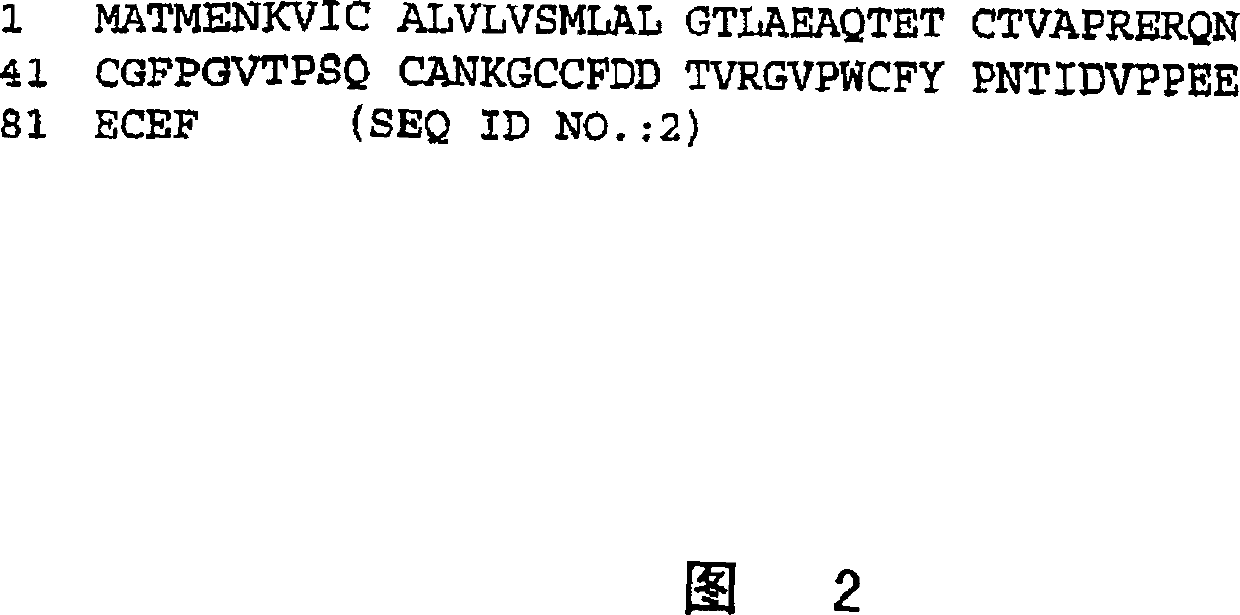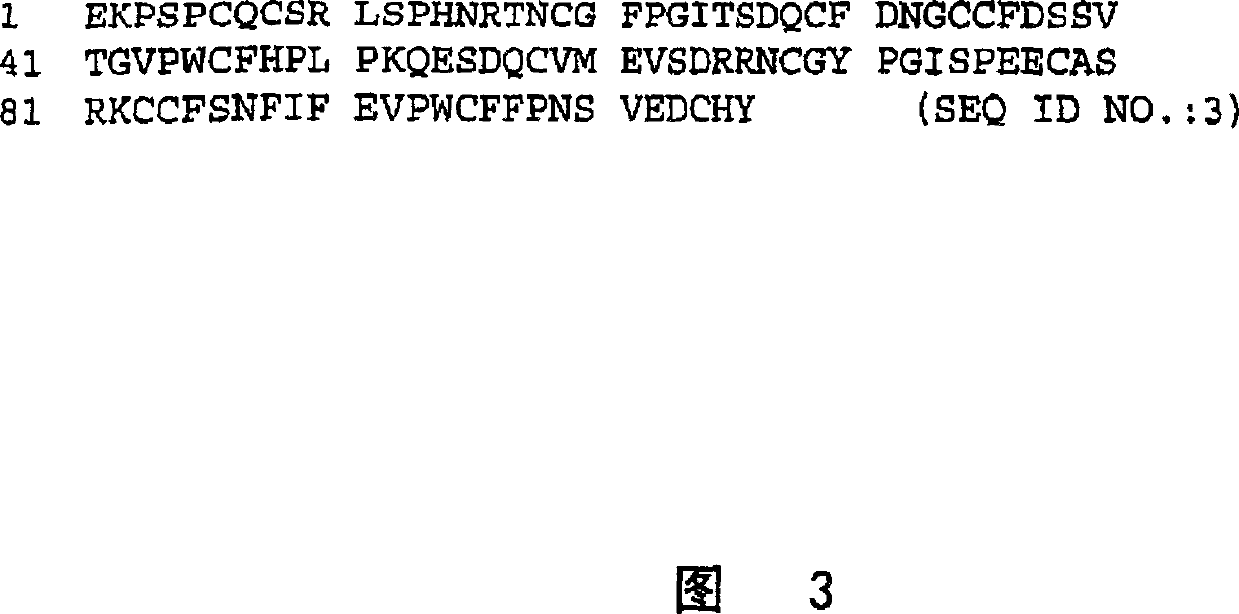Methods and compositions for treating lesions of the respiratory epithelium
A composition and technology of the respiratory tract, applied in the direction of respiratory diseases, drug combinations, botanical equipment and methods, etc., can solve problems such as increasing allergens and agonists, exacerbating inflammation and mucosal decomposition
- Summary
- Abstract
- Description
- Claims
- Application Information
AI Technical Summary
Problems solved by technology
Method used
Image
Examples
Embodiment 1
[0096] Example 1: Treatment of Rhinitis Caused by Rhinovirus
[0097] Immediately after the onset of the head cold, the patient was started to administer the trefoil-containing formulation. This formulation contains a therapeutic dose of ITF 15-73 . The trefoil peptide can be administered as a nasal spray using standard preparation methods to deliver 100 microliters of a 50 mg / ml trefoil peptide spray. For the next 5 consecutive days, the patients were treated by self-administering the nasal spray every 12 hours. Alternatively, the trefoil active material may be used in standard doses of nasal decongestant sprays (eg, 0.05% oxymetazoline hydrochloride).
Embodiment 2
[0098] Example 2: Treatment of allergic rhinitis induced by plant pollen
[0099] During the hay fever season, patients with allergic rhinitis are administered antihistamines such as diphenhydramine, memelonium, cetirizine, or loratadine. In addition, patients are simultaneously administered ITF containing therapeutic doses 15-73 nasal spray formulations. In one example, the composition is a nasal spray using standard preparation methods to deliver 5 mg / ml ITF spray. For the next 5 days, patients were treated by self-administering the nasal spray every 12 hours or as needed. In severe cases, the ITF active material may also be administered with standard dose nasal corticosteroid sprays (eg, beclomethasone propionate, fluticasone, mometasone, or triamcinolone).
Embodiment 3
[0100] Example 3: Treatment following virally prolonged bronchospasm
[0101] In post-viral tracheobronchial epithelial lesions, trefoil-containing materials can be co-formulated with standard doses of inhaled salmeterol formulations into dry powder inhalers, aerosol metered dose inhalers, or as present in ultrasonic or air jet Solution or suspension in nebulizer. Patients continued treatment for at least 72 hours by self-administering the drug every 12 hours.
PUM
 Login to View More
Login to View More Abstract
Description
Claims
Application Information
 Login to View More
Login to View More - R&D
- Intellectual Property
- Life Sciences
- Materials
- Tech Scout
- Unparalleled Data Quality
- Higher Quality Content
- 60% Fewer Hallucinations
Browse by: Latest US Patents, China's latest patents, Technical Efficacy Thesaurus, Application Domain, Technology Topic, Popular Technical Reports.
© 2025 PatSnap. All rights reserved.Legal|Privacy policy|Modern Slavery Act Transparency Statement|Sitemap|About US| Contact US: help@patsnap.com



